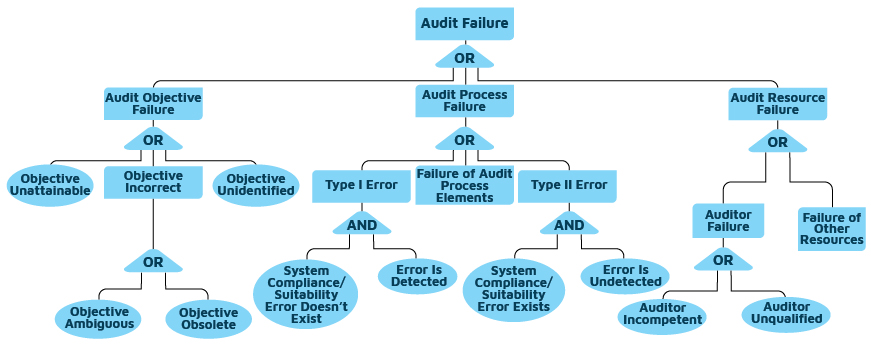Sofema Aviation Services looks at the methodology associated with Fault Tree Analysis.
Introduction to Fault Tree Analysis
Fault Tree Analysis focuses on understanding the causal relationship related to a “top-level” event, which represents a hazard, and progressively uncovers successive layers with the same question format until all contributing factors and root causes are identified.
FTA depicts the risk-based path to a root cause or Base-level event. When investigating a failure, the chain of events depicted by FTA allows the problem solver to see the events leading to a root cause(s) or Base-level event.
When to Perform FTA?
- A Hazard Analysis previously indicated a safety concern
- There is a new system design
- There is a current design with modifications, which may include changes due to past failure
- There is a current design being used in a new environment or change in duty cycle (no physical change made to design)
- Investigation of safety or regulatory concern
- A picture of the failure would be more beneficial than a written inductive analysis
What question is asked?
The basic question when doing a Fault Tree Analysis is “What lower-level faults or failures could cause a hazard?” FTA follows the concept of Boolean logic, which permits the creation of a series of statements based on True / False.
When linked in a chain, these statements form a visual representation in the form of a logic diagram of failure. Events are arranged in sequences of series relationships (the “ors”) or parallel relationships (the “ands”).
Results for each event are presented in a tree-like diagram using logic symbols to show dependencies among events.
How effective is FTA?
The primary problem with FTAs in practice is that they assume independent faults, even though not all events are independent.
Note 1: To endure Valid Logic is employed, when FTAs are used, they need to adequately maintain independence between events, especially when probabilities are calculated in a quantitative FTA.
Note 2: If events are shown as independent but are actually dependent on each other, then the FTA idea is not valid and should be set aside or limited in scope.
How to Perform Fault Tree Analysis (FTA)
The FTA is a logical breakdown from the Top-level undesired event, cascaded to the Base-level event (root cause).
The 5 basic steps to perform a Fault Tree Analysis are as follows:
a) Identify the Hazard
- The Top-level event, or Hazard, should be defined as precisely as possible:
- How much?
- How long (duration)?
- What is the safety impact?
- What is the environmental impact?
- What is the regulatory impact?
b) Obtain Understanding of the System Being Analyzed
- List of components (Bill of Material)
- Boundary Diagram
- Schematic
- Code Requirements
- Engineering Noises and Environments
c) Create the Fault Tree
Base-level event (depicted as a circle or oval) is the point at which the team can address the risk. The Base-level event is typically colour coded as follows:
- Red: Critical Risk
- Orange: High Risk
- Yellow: Minor Risk
- Green: Acceptable / Very Low Risk
d) Identify the Cut Sets (Cut sets are the unique combinations of failures that can cause a system failure.)
- Risk is estimated for each event
- The Cut Sets with risk greater than the system can tolerate (i.e. safety or inoperative conditions) are selected for mitigation
- Actions are required for Critical (red) and High Risks (orange)
e) Mitigate the Risk
Next Steps
Follow this link to our Library to find & Download related documents for Free.
Sofema Aviation Services & Sofema Online provide EASA Compliant Regulatory & Vocational Training including Quality & Safety Assurance and Root Cause Analysis Techniques. Please see the websites or email team@sassofia.com
Tags:
Aviation Quality, aviation safety, Root Cause Analysis, Fault Tree Analysis





